More On: boxing
French boxer Mourad Aliev stages wild Olympics protest after headbutting disqualification
Floyd Mayweather has ‘fun night’ going distance with Logan Paul
Jake Paul bathes in money while boasting $75 million PPV knockout
Jake Paul knockout was ‘f–king embarrassing’ for Ben Askren
Jake Paul destroys Ben Askren in first-round knockout
The first time it occurred to Jim O’Brien that maybe this beat would be a little different was just past 8:15 on the evening of Dec. 7, 1970. O’Brien was 28 years old, about a year into a
More from:
Mike Vaccaro

Knicks' Julius Randle shows how right player can change everything
Scary thought for East: Nets only going to get better
Bill to make baseball the official New York sport is a home run
Knicks have a night to forget: 'You get what you deserve'
Julius Randle-RJ Barrett is electric duo Knicks have longed for
The first time it occurred to Jim O’Brien that maybe this beat would be a little different was just past 8:15 on the evening of Dec. 7, 1970. O’Brien was 28 years old, about a year into a nine-year stint as a reporter and columnist for The Post. He’d covered the Knicks’ championship run seven months earlier. That was something.
“But this,” he recalls, “was something else.”
The beat was boxing — specifically, Muhammad Ali, who on this night would be fighting Oscar Bonavena in his second bout back after a 3 ½-year absence from the sport due to his refusal to submit to the draft. It was also presumed to be the final tuneup for what everyone knew would soon be a shot at Joe Frazier, the reigning and undisputed heavyweight champion of the world.
Ali’s trainer, Angelo Dundee, knew O’Brien from when the reporter had worked at the old Miami News, and had spent some time together at that city’s famed Fifth Street Gym. He’d invited O’Brien to stay in his room at the Loews Motor Inn on Eighth Avenue and 49th Street for a couple of nights, so O’Brien had already seen plenty — such as the day Ali appeared in the lobby and Dustin Hoffman was there, not long after winning an Oscar as Ratso Rizzo.
“It’s the Midnight Cowboy!” Ali roared. “Let me see the limp!”
Hoffman was stunned and initially reluctant. But when Ali asked to see the limp, you did the limp. Ali responded by doing his famed shuffle. “You’re the greatest!” he yelled.
Now, two hours before he was scheduled to go 15 rounds with Bonavena, the No. 1 contender, Ali was just emerging from his room, crawling through the crowded lobby toward a stretch limo that would take him the nine blocks to Madison Square Garden. O’Brien ducked into the subway to head there himself.
And suddenly there was a commotion.
“Suddenly,” he says, “there was Ali.”
There was Ali, and Dundee, and Bundini Brown, bounding down the stairs, trailed by an entourage, stuffing themselves in a train.
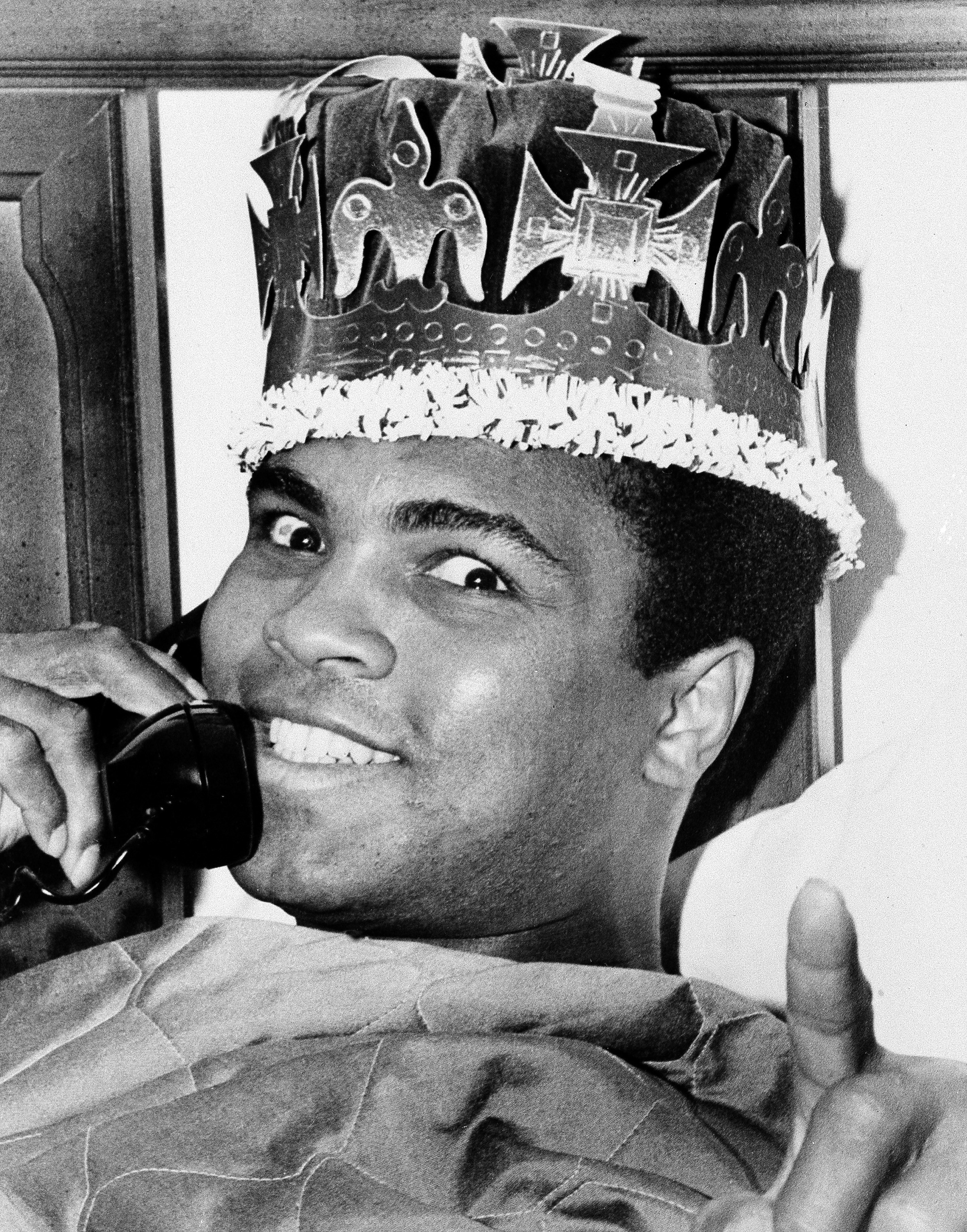
“Imagine being a commuter on the way home from work,” O’Brien says, “and you look up from your newspaper and there’s the most famous face in the world.”
Ali was Ali: “I’m the champ!” he crowed. “And I want the people to see me!”
Then he got off at Penn Station, traded in his $450 Saks Fifth Avenue top coat for white-and-black trunks, took a unanimous decision from Bonavena and declared himself ready for Smokin’ Joe Frazier.
The first time it occurred to George Kalinsky that maybe this event would be a little different was five or six days before the fight, which was scheduled for 10:45 p.m. on March 8, 1971. The bout had been announced Dec. 30 at Toots Shor’s restaurant, his new place on 52nd Street. It had been straight out of the movies. Ali taunted Frazier.
Frazier’s retort: “Shut up and sit down!” It got crazier from there.
In the interim, Ali had retreated to Miami and the Fifth Street Gym. Frazier started to train at the Concord Hotel in Kiamesha Lake, N.Y., up in the Catskills, but a week of road work on icy roads convinced him to go home to Philadelphia and his own gym, Cloverlay.
Kalinsky was 33, already renowned as the official photographer of Madison Square Garden, already the artist who’d famously captured Willis Reed limping onto the court at the Garden before Game 7 of the 1970 NBA Finals. He knew Ali-Frazier was going to be a night for the ages and he had a million details to attend to when there was a knock on his office door.
“Hi, I’m Frank Sinatra,” the visitor said, extending his hand. “I hear you’re a great photographer. Now tell me all you know about photography in five minutes.”
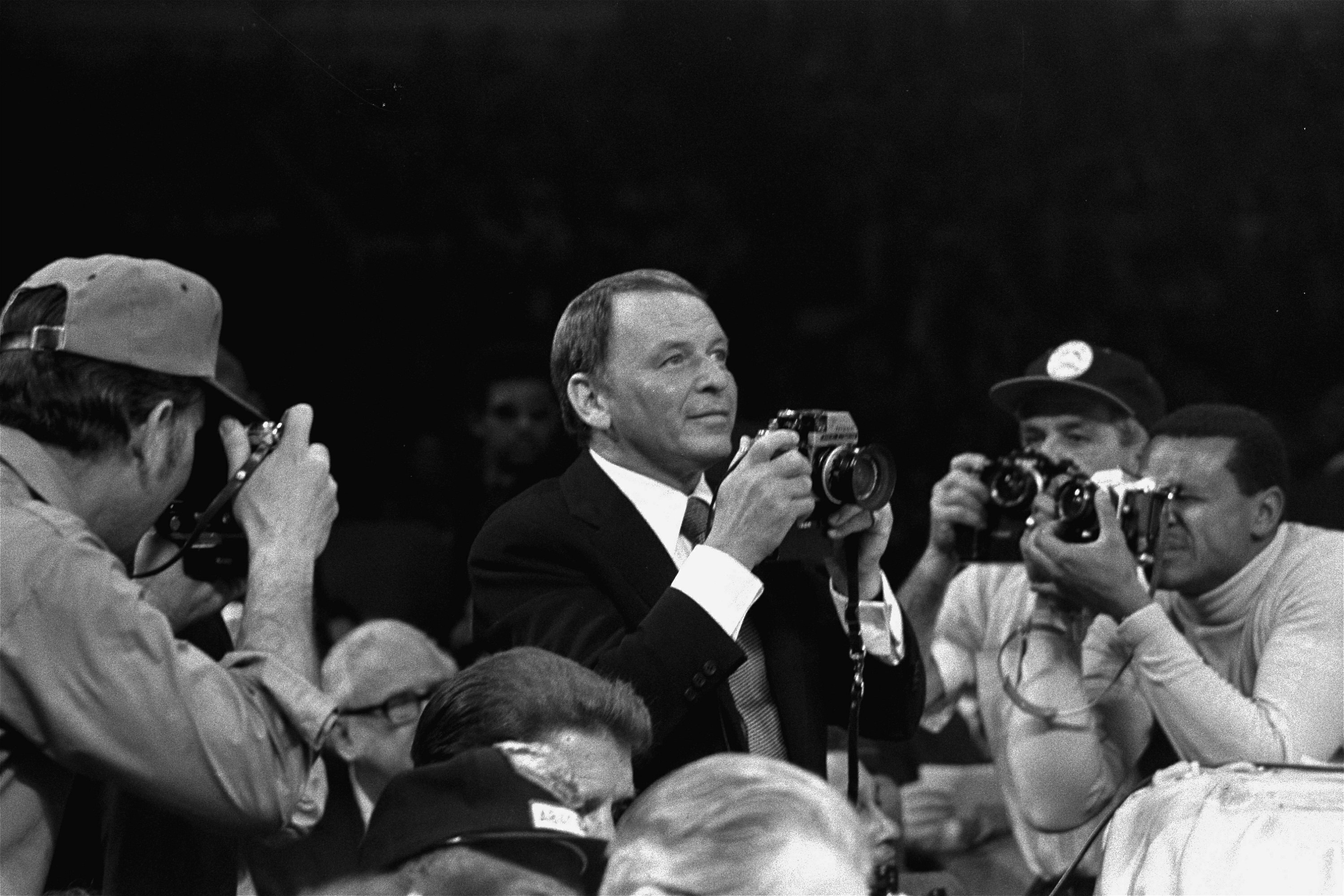
Sinatra had been commissioned by Life magazine to take pictures of the fight, and he wasn’t going to use a Kodak Instamatic. Five minutes became a three-hour lunch at Patsy’s, Sinatra’s favorite Italian joint in Manhattan.
“We talked about photography and Ava Gardner,” Kalinsky says.
It is impossible now, today, to fully conjure what that time was like. In the 89 days alone between the announcement of the fight — for which each man would be paid $2.5 million ($16 million in 2021 dollars) and a ringside seat would cost $150 — Charles Manson was convicted of murder, and Lt. William J. Calley took the stand in his own defense in the My Lai Massacre trial, and both New York’s cops and firefighters walked on separate job actions.
Satchel Paige was elected to a special — many said segregated — wing of the baseball Hall of Fame for Negro Leaguers, which infuriated Jackie Robinson, who raged to Post columnist Milton Gross: “It’s not worth a hill of beans. It’s a lot of baloney. It’s the same goddamned thing all over again. They deserve the opportunity to be in but not as black players in a special category.”
Jim Murray of the LA Times put it this way: “Either let him in the front of the Hall — or move the damn thing to Mississippi.”
“You had two undefeated heavyweight champions and two distinct personalities,” O’Brien recalls from his home in McMurray, Pa., where he has authored many of his 30 books, notably “Chief,” a biography of Art Rooney, and “From A to Z: A Boxing Memoir from Ali to Zivic.” “Frazier had stepped into the breach when Ali went away, and Ali, at least publicly, never forgave Frazier. And he was rough on him. He called him ‘Uncle Tom.’ Frazier wouldn’t call him by his Muslim name. It was ugly.”
“You had two undefeated heavyweight champions and two distinct personalities.”
Former Post reporter and columnist Jim O’Brien
For a tabloid writer that, of course, was pure gold, and O’Brien lived on the back page for two months. Boxing’s lifeblood in those days was newspapers, and the promoters of the fight not only had tickets to sell but theaters around the country to fill with a closed-circuit telecast. Shor’s and Gallagher’s were the venues of choice to spread the gospel.
O’Brien always heeded two pieces of advice from Gross, who shared The Post’s sports column for 25 years, first with Jimmy Cannon and later with Larry Merchant.
- “If it don’t write easy, it don’t read easy.”
- “If you run with the pack, you’ll read like the pack.”
Besides, in New York, in that time, running with the pack was boring and writing easy was … well, easy. O’Brien was walking along 52nd Street the day of the fight’s announcement and saw Joe E. Lewis, the aging actor/singer, being helped into a cab; later, at Shor’s, he talked to Joe Louis, still one of the most beloved heavyweight champs of all.
“Only in New York,” O’Brien mused to himself, “can I see Joe E. Lewis and Joe Louis on the same block in the same hour.”
Kalinsky, of course, made his reputation apart from the pack. One day a few weeks before the fight he got a call from John Condon, the Garden’s legendary boxing PR chief (and also famed P.A. announcer). Together they headed for Philadelphia, where Ali had been flown in for a morning to spend a few hours with Frazier.
On the ride south, Kalinsky told Condon what he most wanted: a simple picture of Frazier and Ali face to face, nose to nose. It had never been done before. It had never even been suggested before. But Ali and Frazier both knew Kalinsky and, as important, trusted him implicitly. At Cloverlay, they inched close to each other.
“Act like it’s fight night!” Kalinsky said. “Ham it up!”
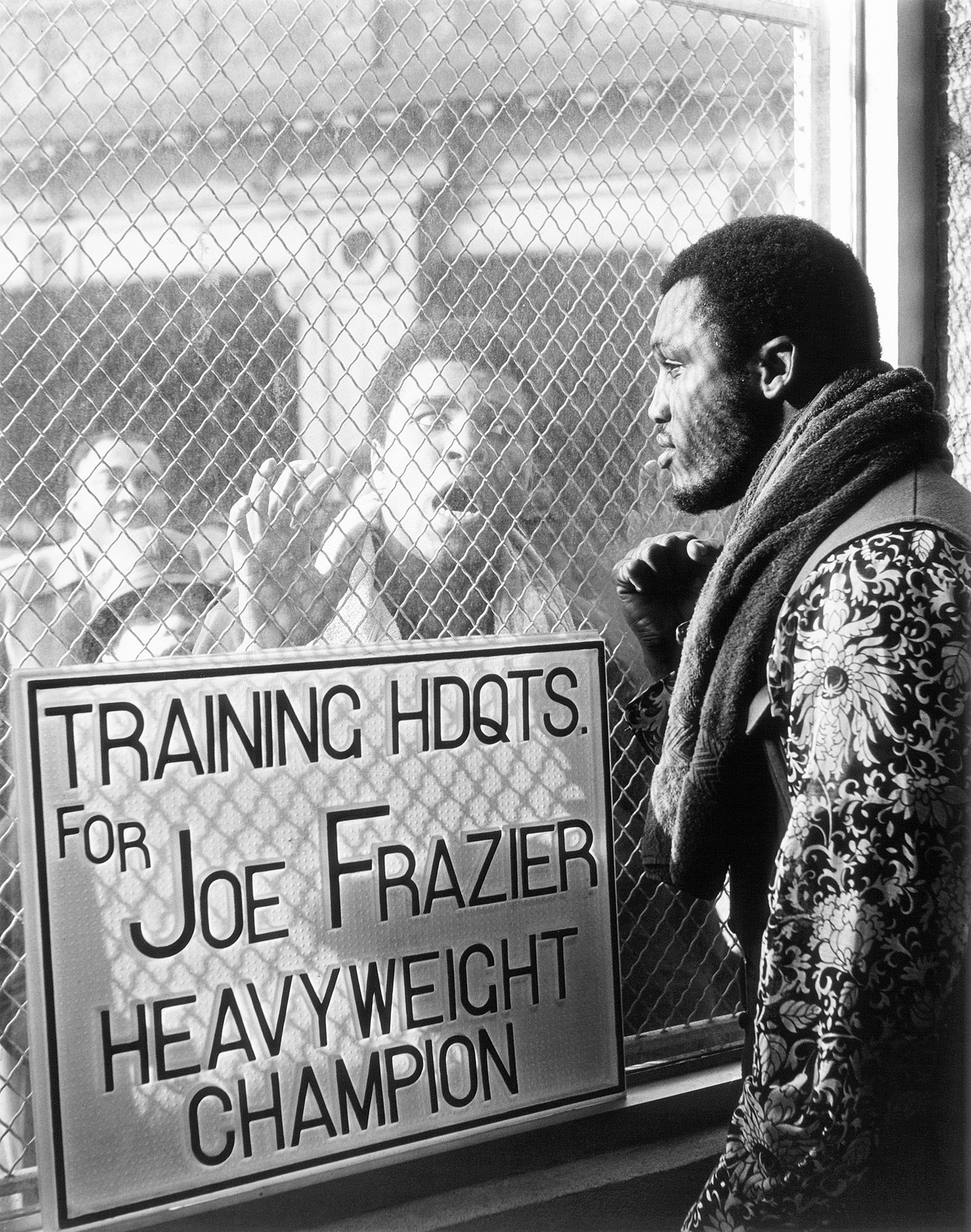
He smeared their faces with Vaseline and water to simulate sweat. Ali was always game for a little trash talk, Frazier not so much. They sneered a little. It still lacked something.
“Look mean!” Kalinsky said.
And with that, Smokin’ Joe Frazier hit Muhammad Ali with a straight left to the stomach. Ali went down like he’d been shot, looked up, and said, “You SOB, you can really hit!”
“Cassius,” Frazier said, using Ali’s birth name (which partly fueled Ali’s resentment), “that’s the way it’s gonna be the night of the fight! You’re going down!”
Kalinsky got his shot. It was so iconic, unique, so unusual, that when a newspaper used it on the side of a truck he got a call from Condon at 4:30 a.m., who’d gotten a call from the paper’s publisher at 4 a.m., admonishing him for using a cut-and-paste trick. Kalinsky had to show his original picture and another one: an also-famous shot of Ali clowning on the other side of the door to Frazier’s headquarters.
“He believed me after that,” Kalinsky says.
How to describe the night of the fight? Kalinsky’s used this line for years: “The crowd all came in furs and diamond-studded heels … and that was the men!”
Also: Kalinsky was the one responsible for converting Knicks star Walt Frazier (no relation) into Clyde with one photo shoot, which featured Frazier’s inimitable wardrobe and taste for hats and Rolls-Royces. “Clyde blended in that night,” he says.
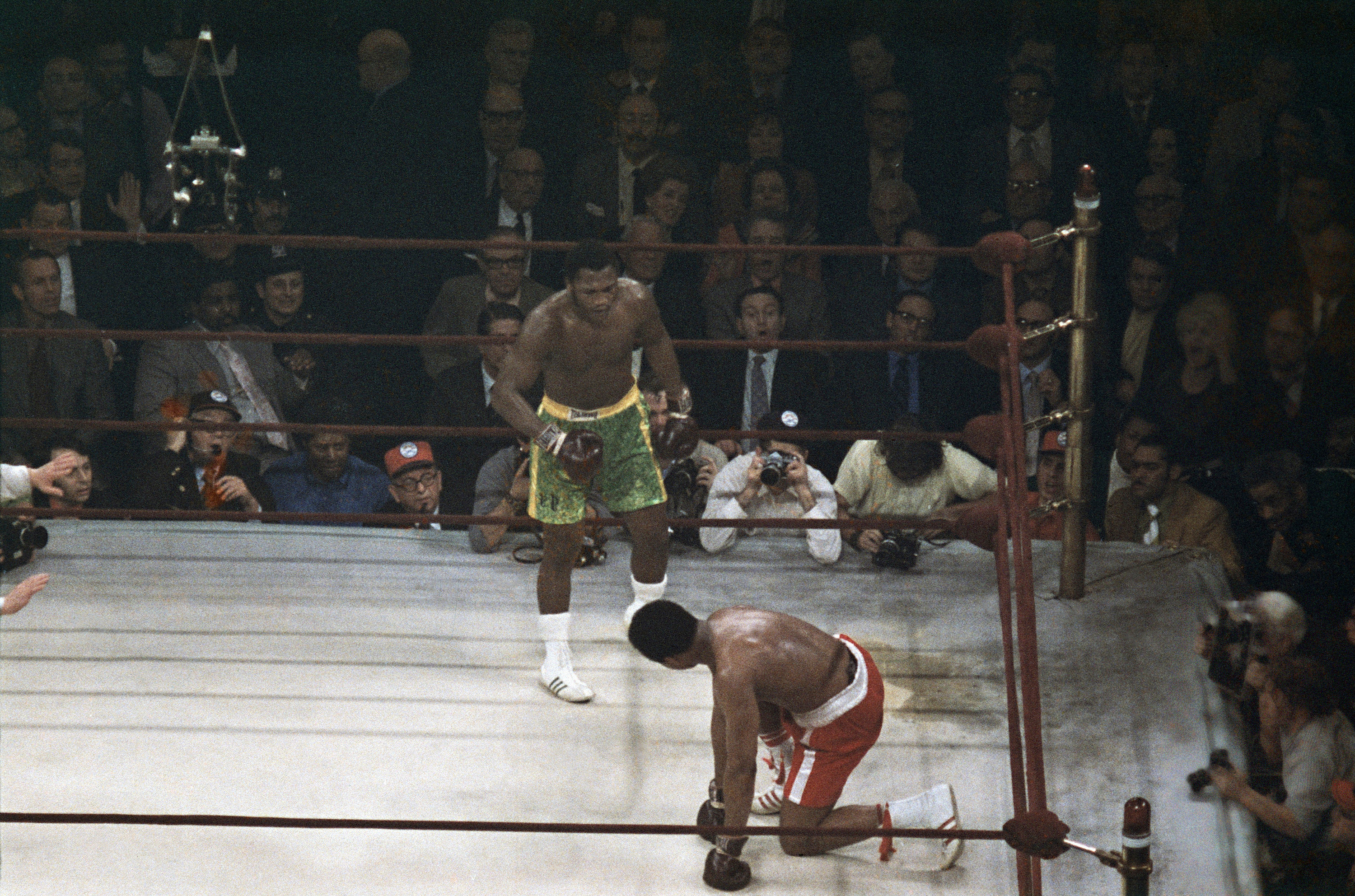
The Knicks were all there. The Rangers were all there. Kalinsky was strolling through the old Felt Forum when he walked past the dressing room of Leonard Bernstein, the composer, and when Bernstein spotted Kalinsky he asked, “Can you take me to John Condon’s office?”
Condon had become the most important citizen of New York that day, guardian of the supply of 20,455 tickets. Buzz Aldrin, the astronaut, had called and Condon, in a panic, said, “Come. If I don’t have a ticket for you, then you can have my wife’s seat.” Condon kept two in his pocket in case he got a last-second call from President Nixon. He was in charge of accrediting 600 journalists from around the world.
“I need to make sure he has my tickets,” Bernstein confided.
Kalinsky walked him there. On the way he ran into another familiar face, who was also seeking out Condon, who was also worried about his ducats.
“Come with me,” Kalinsky told Rainier Louis Henri Maxence Bertrand Grimaldi, also known as the Prince of Monaco, also known as Mr. Grace Kelly. The prince left happy.
It was O’Brien’s task to memorialize a night that was almost too surreal for words. Ali’s chief bodyguard was a man named Stacks Edwards; you may know him better as the ill-fated character portrayed by Samuel L. Jackson in “Goodfellas,” sent on his bloody way by Joe Pesci’s Tommy because “instead of getting rid of the truck like he was supposed to he got stoned and went to his girlfriend’s.” Edwards went wherever Ali went that night. Edwards was all over The Post, eight full years before the Lufthansa heist.
O’Brien took his ringside press seat alongside The Post’s longtime sports editor Ike Gellis, equally esteemed editor Paul Sann, columnists Gross and Pete Hamill and Jose Torres, once the light-heavyweight champ and now an op-ed writer at the paper.
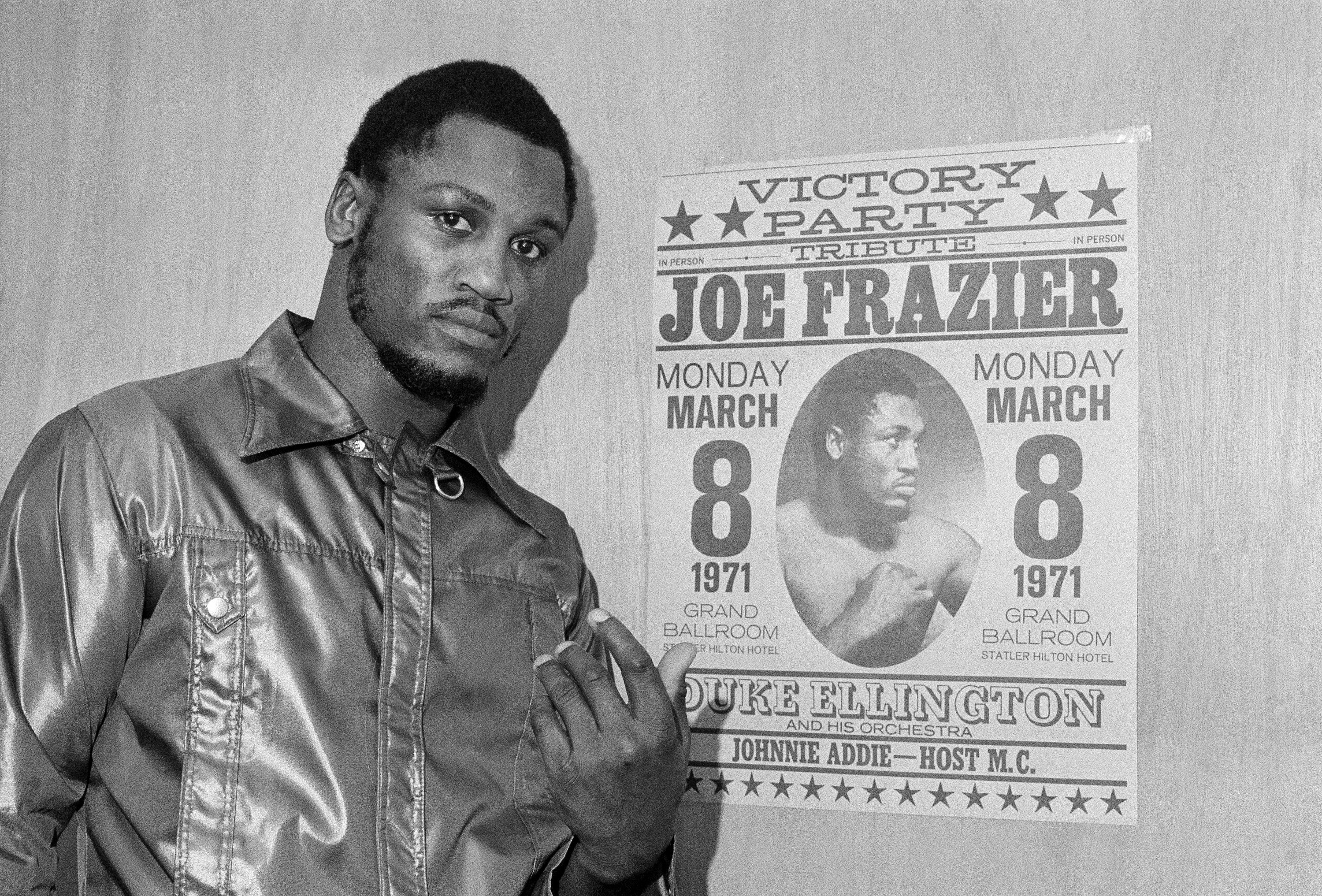
In the seats immediately surrounding him were Hollywood mogul Darryl F. Zanuck, Jack Kent Cooke, Lorne Greene and Burt Lancaster, who would provide commentary for the closed-circuit broadcast. O’Brien’s wife sat next to Diana Ross.
The Post was an afternoon paper then, so he was able to rush his story from the weigh-in for the last editions the day of the fight, and it was Gross who ripped the pages out of his typewriter and called the office with dictation in order to beat the deadline.
The fight itself, of course, was a classic: 15 rounds, a unanimous decision for Smokin’ Joe, Frazier sending Ali to the canvas for the first time in his life nine seconds into the 11th round, although referee Arthur Mercante ruled it not a knockdown, that Ali had slipped on water near Frazier’s corner. Ali swore he won the fight. Some agreed. Most believed Frazier won fair and square. From ringside, you could tell it was a little different than most fights.
“They really wanted to hurt each other,” O’Brien says. “It was brutal.”
He captured it splendidly the next day: “It was some show. Whatever was said about it in advance, and it was the most publicized fight in history, seems like a soft sell in the aftermath.”
The next day, O’Brien was one of seven writers summoned to room 2532 of the Hotel New Yorker, just up the street from the Garden, where Ali lay on the bed exhausted and hurt, the right side of his jaw swollen, his eyes puffy. He’d spent some time the night before at the Flower Fifth Avenue Hospital for X-rays, and had blood in his urine. Frazier, at the Pierre Hotel at Fifth Avenue and 61st Street, was hurting too.
But he had the belt. All Ali had was hope for a rematch.
“The next time, I’ll learn,” he said. “I won’t play around.”
He was true to his word. But that’s another story — two of them, actually — for another day.
This story originally appeared on: NyPost - Author:Mike Vaccaro






















